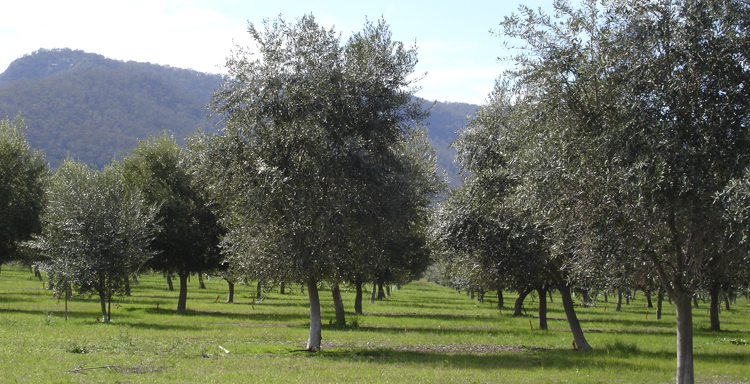Many countries contend for the wise root of the Olive - Homer.
Crème de la Crème investigates the olive, and the growth of olive agriculture in Australia.
The history of the olive is as old as the history of mankind. Fossilised olive leaves discovered in the walls of the caldera on Santorini have been carbon-dated to 50-60 thousand years old, and it is reckoned that olives first appeared in the Mediterranean long before mankind evolved from its pre-human progenitors.
Papyri dated to 1550BC deal with the cultivation of the olive, and Theophrastus, (fourth century BC) speculated about the relationship between the cultivated form and the wild form. The oldest written records date from the third millennium BC, in the form of clay tablets from the northern Syrian city of Evla, recording the significant production of olive oil in the region.
The mythology is as rich as the history. That such an important plant, providing food, light, shelter, healing and warmth, and thriving in the poorest of soils, should not be a gift from the Gods never crossed anyone's mind.
Ancient Athens was given the choice of patron gods, and to aid their decision-making a simple contest was devised between Poseidon and Athena, the finalists.
Poseidon struck a rock with the butt of his spear. A stream of water and a splendid white horse sprang from the rock, impressing the immortals. Athena in her turn struck the ground with her spear. A full-grown olive tree appeared, laden with blossom and fruit. No contest, and furious Poseidon was packed off back to the sea leaving grey-eyed Athena in possession of the field. And from this tree, all others grew. Historical records recount the Acropolis possessing a sacred olive tree, of untold antiquity, said to be The Olive Tree.
The olive is naturally a bush, and if left to its own devices will revert to being a bush if it has been formerly trained as a tree. The flowers, like in many stone-fruit, are borne on last year's wood, in spring, with the fruit developing slowly, only ripening fully in late autumn to winter.
Trained by selective pruning to a tree-shape to increase yield and to make harvesting easier, the olive shows its characteristic twisted, almost tormented form. Fruit-bearing from 3 or 4 years old, full maturity is achieved at about 10 years old, and of course olive trees are capable of living to enormous ages.
The oldest known entire olive tree is 2,000 years old and still yields a crop every year.
Despite thriving in poor, chalky soil in arid coastal conditions, olives perform best when regularly irrigated and fertilised. They have been planted with profit over much of the world with climates approximating the Mediterranean one, and in Australia do well in the cooler parts of Queensland, and a broad swathe across the southern half of the country. Olives will grow pretty much anywhere where grapes will - eg the Hunter Valley in NSW.
Under Australia's policy of import replacement for agricultural commodities, successive governments have encouraged the development of a native olive industry. While this is appealing to the small-holder, it is only the huge thousand-hectare plantations that will be profitable. The issue is harvesting. While pruning can be carried out for much of the year, and fertilising and irrigation delegated to computer-controlled pumps and pipes, harvesting is an expensive business.
Once picked an olive must be processed as quickly as possible, or oil quality will suffer, and/or the fruit destined for the table will go off. Harvesting has traditionally been done by hand, but in Australia at any rate, very few people now make their living from the land. Labour is expensive, if it is available at all.
A concerted push to develop mechanised harvesting has been made, and for the larger plantations, mechanised pruning as well. The traditional Mediterranean shape – the single, short trunk and a hollow spreading canopy, perfect for manual harvesting using short ladders, is probably not the optimum shape.
Recent thinking calls for the olives to be closely planted, as hedges, trained two-dimensionally, like grape vines. An over-the-row harvester is then used to strip the olives from the twigs that hold them in a continuous process. Pruning techniques have to be re-learned or reinvented to improve the yield from such a planting system, and it may be that letting the olive form its natural shrubby shape will be the best method of all.
